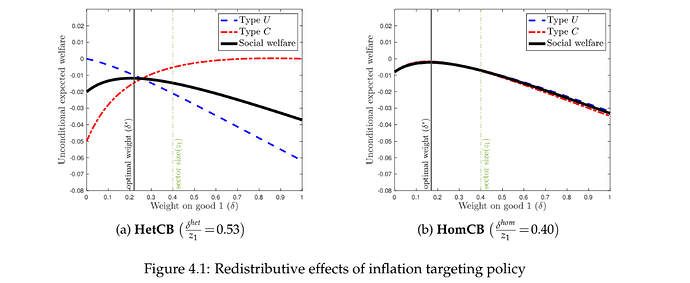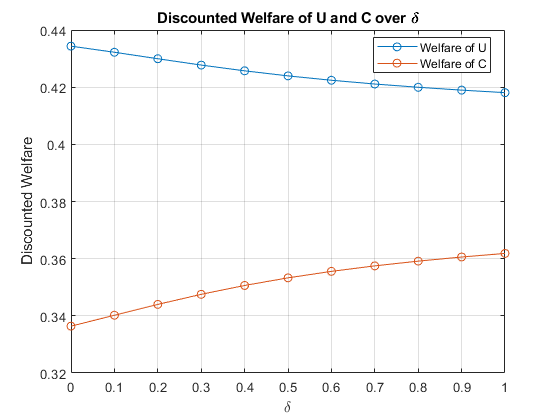Dear all,
I would like to ask for advice on how to conduct a welfare analysis in Dynare. I am trying to replicate the results from “Optimal Monetary Policy under Heterogeneous Consumption Baskets” by Seunghyeon Lee. I have derived the entire model and implemented the log-linearized (first-order approximation) system of equations in Dynare. However, I am currently unable to reproduce the graph where delta is the parameter on good 1 in the Taylor rule.
The author defines welfare as “the expected welfare of each type (measured as deviations from the deterministic steady state).” Could you please advise me on the following:
- Which order should the utility function be in the
.modfile?
// log utility
U_U = log(cU_level) - nU_level^(1 + varphi)/(1 + varphi);
U_C = log(cC_level) - nC_level^(1 + varphi)/(1 + varphi);
// First order approximation of log utility
U_U = cU - nU_level^(1 + varphi)*nU;
U_C = cC - nC_level^(1 + varphi)*nC;
// Second order approximation of log utility
U_U = cU - nU_level^(1 + varphi)*nU -0.5*cU^2-0.5*varphi*nU_level^(1 + varphi)*nU^2;
U_C = cC - nC_level^(1 + varphi)*nC -0.5*cC^2-0.5*varphi*nC_level^(1 + varphi)*nC^2;
Lowercase letters denote deviations from the steady state.
- Which order should I use when running the simulation? Could you please check if this is correct?
stoch_simul(order = 2, periods=1000, irf = 0);
- I do not need to implement the the system of equations with the second-order approximation manually in Dynare, right?
I calculate the sum of discounted utilities in a separate .m file, but the result I get is not correct.
This is my result for the HetCB case.
Thank you very much in advance.

